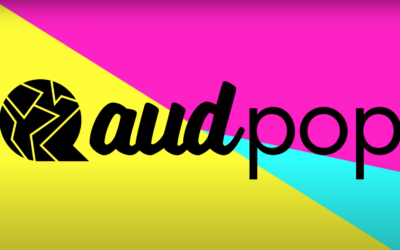Social Media Engagement: Video Contests.
Eyeballs no longer equal dollar signs. The new digital age brings remarkable benefits along with herculean challenges to marketing directors looking for new ways to engage their fans. With the mouth of the brand-megaphone expanding to include users at home with pocket-sized HD cameras, the rules have officially changed. No longer does a Facebook like, a Twitter hashtag, or an Instagram double-tap equate to true brand engagement. Tools automating social engagement like Hootsuite and Buffer have brought levels of automation to the social media world resembling a humanless assembly line of posts, tweets and hashtags. The level of one-to-one engagement is the lowest ever on some of the most popular social media platforms.
Online Video:
The opposite is true for online video. It seems like each week we’re hearing a new statistic about user engagement going through the roof. Online video is easy to measure: views. And views are becoming a valuable asset to companies fighting for attention in an increasingly crowded world.
Video Contests:
Premise: Video contests have a higher barrier to entry than a click or an impression. Users submit content they’ve produced about the brand. Think of the difference between friending someone on social media and sitting down for coffee with that same person. There’s a big difference. A Facebook like, a business card drop-off or a one-off hashtag isn’t a commitment or signal of loyalty. What is? A Video submission. A video submission takes time, effort and thought.
Strategy: As a brand manager, a social media manager, or a marketing director, you’ve likely been assigned the responsibility of monitoring your brand (not your personal brand, but the brand of the company you’re working for). You’re searching boards, setup your Google alerts and have a small army helping you respond to inquiries and support questions. Perhaps you’ve experienced the problem of needing users to create more content. Maybe you have video content, but need an audience.
Using video contests, your team can sit back and watch high quality video stream across your desk. The best part, the contests are hosted on The Audience Awards to increase exposure outside of your immediate following. Amateur and professional filmmakers interpret your branded story. Lastly, you own the content of the videos. Any video submitted through the audience awards becomes evergreen content for your brand. Share it, re-use it and share it again. What a great case-study to show executives how users are interacting with your product or service.
But what did brands do when it came to social engagement and user-generated content? Here are three strategies deployed by brands that fall short when it comes to generating quality customer content:
User Unengagement:
The Facebook “Like” Campaign:
Premise: This strategy worked when Facebook likes actually mattered. It’s been reported by marketingland.com that less than 3% of Facebook posts are now seen organically by brand followers.
Strategy: Giving away free stuff in exchange for likes. A couple questions to ask when embarking down this path: are these real fans of your brand? The barrier to entry to click a thumbs-up button next to your Facebook profile is pretty low. But there’s a cost to that number in the “like” column.
Caution Tape: Opting in for a low-barrier to entry contest is not a signal of brand loyalty, brand engagement or even brand awareness. It’s a lottery ticket with no strings attached. You email subscriber list will fill up, and it will quickly be followed by your email unsubscriber list.
The Free Lunch:
Premise: This is a strategy that can work, provided it has nothing to do with a fish-bowl. We’ve all seen it before. The sign asking for business cards in exchange for the chance to “Win a free lunch catered by Dolly’s Sub Shop!” Encouraging, the bowl is typically filled up with business cards.
| Source: brandyyoubrilliant.com |
Strategy: The fish-bowl-business-card mission is an attempt to increase email subscribers. Pre hotmail.com, the strategy was to generate leads for the call-list. Most CRMs will actually advise marketing professionals and webmasters to dismiss this strategy declaring that users are not opting into anything.
Caution Tape: The fish-bowl-business-card can be traced back to the earliest forms of spam. Your card finds its way into a rolodex and the next thing you know, you’re changing your phone number and changing the locks.
The Hashtag:
Premise: The hashtag is a popular way to measure brand engagement. Checkout search.twitter.com for a quick look at what keywords and hashtags people are using to communicate your brand. Surprised? Most of us know how a hashtag works. You’re at a conference and you post a picture on Twitter or Instagram using the conference hashtag. When you dive into that hashtag on either platform, you’ll see all sorts of posts and updates from the conference.
Strategy: Encouraging users to post images using your branded hashtag to generate engagement. They post, their friends see the post and engages with the hashtag. The marketing loop is complete, right!?
Caution: Not really. Brands don’t own hashtags. Users can quickly turn on a fun idea coming out of the weekly marketing meeting. Take #McDStories as an example. In an attempt to generate fun-filled stories about McDonalds, the Twitterverse turned salty with their own anecdotal experiences underneath the golden arches. Interpreting the campaign in a new light.
What Now?
The psychology of quality user generated content has changed through the years. With video editing software capable of producing cinematic quality shorts during an evening commute, leveraging video contest and video content has never been more important.





